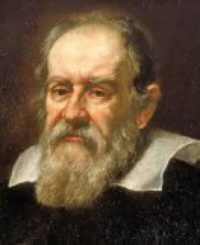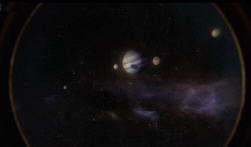Galileo Galilei
Catholic Spanish Inquisition
Andrew Marr’s History of the World - Age of Revolution
In the early 17th century, Italy was a land teeming with new money, thinkers, experimenters and inventors. The land where the Renaissance had begun. You might have thought that the Enlightenment would shine here first. And indeed, in 1609, a loud-mouthed mathematician from Pisa launched a scientific revolution. Galileo Galilei dragged the ruler of Venice, the Doge to the highest point in the city. He was showing off his new invention. Galileo had invented the telescope.
Except that the idea wasn’t Galileo’s at all. He’d nicked it from a Dutch inventor who’d just arrived in town. But within a couple of days, Galileo was making his own lenses and experimenting and hugely improving on the original. And so, with his magic tube, Galileo was able to double his income and turn himself into a kind of scientific star.

But Galileo’s telescope would also bring about his downfall. What he saw overturned one of man’s central beliefs about the Earth and its place in the universe.
The ancient Greek philosopher Aristotle had taught that the Earth was the centre of the universe, around which the sun, the moon and the planets rotated. But 60 years earlier, the Polish astronomer Copernicus had put forward a wild-seeming theory - that the sun was the centre of the universe.
Galileo’s telescope allowed him to test this theory with his own eyes. First, he observed four moons revolving around Jupiter and not the Earth. Then he calculated that Venus was moving around the sun. Galileo could now confirm that Copernicus was right. The sun, not the Earth, was the centre of the universe.

Now, this overturned nearly 2,000 years of belief. The church had accepted Aristotle’s argument. The Bible said that the Earth was fixed and cannot be moved, and taught that man was God’s greatest creation, so it followed, obviously, that the Earth was at the centre of everything.
Now Galileo was claiming that the obvious wasn’t true. In fact, things were worse than that. He had proof. Galileo began writing about his discovery. His fame spread throughout Europe. He was compared to Christopher Columbus, as a discoverer of new worlds. But he knew he was playing a dangerous game.
The problem was that this was the height of the Counter-Reformation, the decades of the fighting hopes, determined to crush Protestant dissent and impose absolute orthodoxy. Pursue a thought too far, and you could be in dead trouble.

In 1600, the friar Giordano Bruno had proposed that the sun was a star and the universe was infinite. The church’s ultimate loose cannon, Giordano Bruno was burned at the stake for various heresies.
Any last words? No, they rammed a steel spike through his tongue.
In 1633, the church finally lost patience with Galileo, too. He was arrested by the Catholic Inquisition.
The case against Galileo was really more about the Church’s authority than astronomy. If the church could be wrong about the stars, what else might it be wrong about?
Dressed in the white robes of a penitent, Galileo knelt to hear his sentence. He was judged “vehemently suspect of heresy”. His books were to be destroyed, he was sentenced to life imprisonment. But worst of all, he was told to publicly abjure, curse and detest his own opinions, and deny that the Earth moved.
His life’s work was stuffed back down his throat. And yet at the end, he spat just a little bit of it back. “Eppur si muove” - “And yet it moves”.
Galileo had been silenced in Europe’s Catholic south. His work remained on the churches list of banned books for 200 years. But Galileo’s ideas spread north to Protestant countries, like Holland and Britain, where freedom of thought allowed scientists such as Isaac Newton to flourish. An enlightened Age of Reason was never going to blossom under the censorship of the Church.
But even beyond the reach of the Catholic Church, thinkers did have to be concerned about a different kind of authority, because this was the age of Royal absolutism, when monarchs claiming complete power ruled from Paris to Prussia, from St Petersburg to Vienna.
